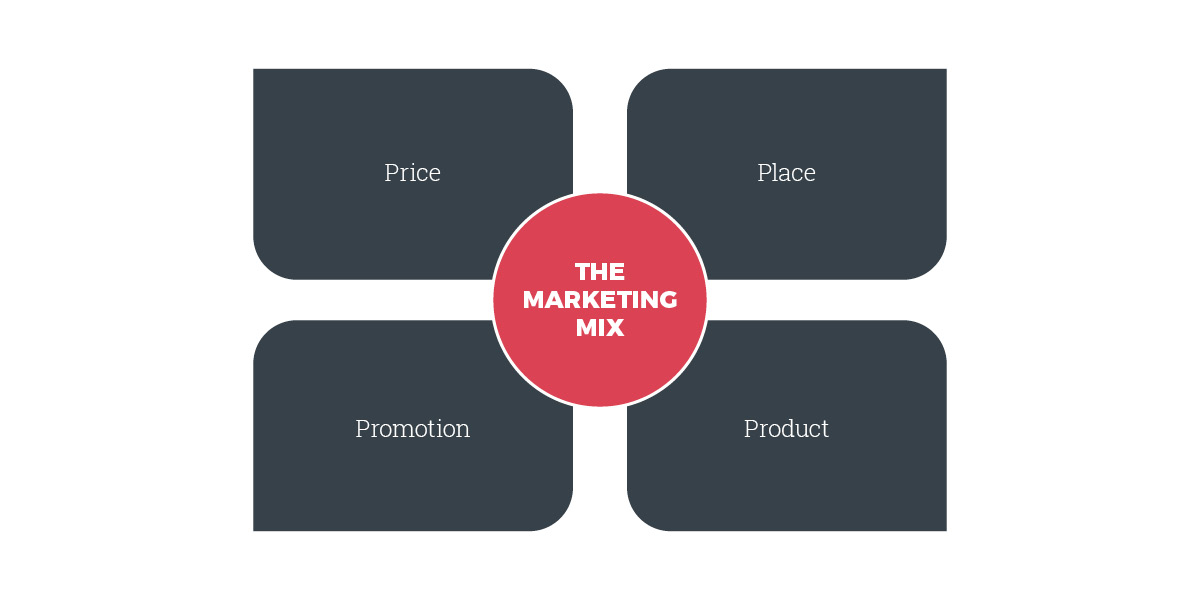Too many destination marketers confuse “advertising,” “promotion” and “marketing.” Don’t be one of them.
Getting the terminology correct will make your investments much more effective.
There has been a lot of discussion in recent years about destination marketing organizations (DMOs) morphing into destination management organizations. While managing the product is becoming increasingly important in driving tourism, misunderstanding the terminology – advertising, promotion and marketing – are often used interchangeably can create confusion about an organization’s objectives. Let’s clear up the semantics.
If you’re well-versed in marketing, you’re undoubtedly familiar with E. Jerome McCarthy’s Four Ps of Marketing, sometimes referred to as “The Marketing Mix”:
- Pricing
- Place
- Product
- Promotion
Which of the four Ps matters most to a destination marketer? Typically, a DMO has little control over pricing and place. Promotion has changed drastically as a result of technology that accelerates word-of-mouth communication and shifts control over the messaging toward the consumer. For this reason, product is becoming an increasingly critical focus for DMOs; positive word-of-mouth flows freely from visitor experiences that exceed expectations.
Historically, destination marketing organizations have invested heavily in promoting their destination through media relations and paid advertising. Now they must consider promotion through digital channels as well. It’s important to remember, however, that promotion is only one component of marketing – and that advertising is only one method of promotion.
Why is this important?
The experience that a destination delivers can be its most meaningful promotional tool. Destination marketers can no longer assume that promotion (in terms of reaching large numbers through broadcast advertising) is the best investment of their limited resources. Instead, destinations should consider shifting their marketing mix towards product, because improving the visitor experience is the most effective way to super-charge positive word-of-mouth. With the aid of digital communication, a visitor experience begins long before they arrive and can last long after the journey ends. This means that DMOs that default to advertising as their primary method of promotion are missing enormous opportunities to engage their audiences.
Since the word marketing now means something far beyond promotion or advertising, modern destination marketing organizations (with an intended emphasis on marketing) must take responsibility for leading the collaboration within the industry and all stakeholders to define, measure and provide a consistent visitor experience.
More reading related to developing a destination’s product: Design thinking for the modern DMO
Destination Think helps destination marketers and DMOs adapt to change by pairing modern strategy and implementation services with an unmatched global expertise in destination marketing. Stay relevant; contact us to find out how we can help.










The general approach is fully appropriate but lacking since the real conditions are underestimated at large: The expression of “while managing the product is becoming increasingly important in driving tourism” is clearly showing that weare appraching to the problem from ends but not means! The clear merket mistake is: We are trying to sell whatever available in the market for the name of tourism industry and now trying to solve rhe mistakes of ‘industrial production deficiencies’ due to non existence of Destination Management. The first vital aim must be to establish proper DMO (management version) models for destinations to enable a balanced industry, covering prosperious marketing activities. Otherwise, proper macro efficiency and effectiveness cannot be ever reached!
Thanks for your thoughts, Zafer. For many destinations, the shift to a new destination management model is a long journey because different organizations are starting from a different place. Every destination and its tourism board is in a unique position. Some are already excellent at destination management. Others are well-focused on promoting the experiences that truly differentiate their destination. On the other end of the spectrum, other destinations are promoting to mass markets or simply appeasing their hotels and the noisiest stakeholders, which in the long term isn’t doing the destination any favors. One mindset for success is for the tourism board to think of themselves as leaders for their destination and the industry through exciting and collaborative processes. The industry is, afterall, the key ingredient for delivering an experience that exceeds expectations created through any promotions.
Very good point Zafer. Many destinations have certain realities based on the past, and this will continue in the future. Like Rodney said, the DMO needs to take a leadership role.
One example. A leftover from the industrial area is a mass production mindset where products need to be the same everywhere. A McDonalds hamburger is the same everywhere around the world. This is the same with many hotel chains and even smaller tourism operators try to emulate this. But consumers are looking for authenticity. What’s the local flavour of something familiar? Microbreweries, farm-to-table and boutique hotels are examples of trends where uniformity is replaced with local flavours. The same can be applied to any tourism product. Through design, storytelling, staff and more. This is the basis of turning the tourism legacy into unique assets.
Agree Rodney; and using the 4Ps model you could say DMO should just = Destination Marketing Organisation because if they are managing or taking a leadership/facilitation role in all 4 Ps they are already doing Destination Management as “Place”. That’s how I’ve tried to explain it to clients and stakeholders over the last couple of decades. However, as you note, it seems easier for many people to see Destination Management as a new phenomenon and consider marketing as a subset. Whatever helps the stakeholders understand the issues and roles I guess 🙂
I’ve fought that battle over semantics for a number of years and I’m nearly giving up. The word ‘marketing’ is so intertwined with ‘promotion’ and ‘advertising’ in our industry and others that it may not be important to split. If a new word like ‘management’ or experience development’ or ‘destination development’ enables investments in new opportunities, lets not get too hung up on semantics!
Little bit late to react on 2.5 year article buit here I go. Great and concise article, Rodney, and a relieve to again read this between all the articles lately about online marketing, storytelling, ‘place DNA’ , which unfortunately have taken over this site and DT in the last two years. I would like to see more articles like this returnign to this site!
I live in a region where the websites are terrible or non-existent, social media is not used as marketing tool, no DMOs are in place or set up with people who dogmatically think they can actually actively influence a brand by storytelling, branding campaigns etc. (which may work for fast moving concumer goods etc. but not for abstract concepts liek destinations). No products are developed based on ‘destination place DNA’ or suchlike. And still more and more people (continue to) visit this region. How come? The other Ps only: Place and Product and for centuries already (unmanipulated-forced-upon-or-selected-by-DMO) word-of-mouth (we just less and less trust anything coming from DMOs or other formal channels anymore ;)). And according to me it have been, are and will be (always) the collectivity of small and large local entrepreneurs and especially their guests/visitors who take the lead and make or break the visitor experience (here and elsewhere in the world; no DMO can influence this), supported and facilitated by the local municipalities and economic development organisations providing funding for product development (the new role of a DMO for me.
Finally also,could it be that (destination) marketing is more of a thing in Northwestern Europe and US/Canada/AUS/NZ (so the English-speaking countries)? What is your experience?
So Rodney, thanks and keep up the good work!
Cheers,
Nicolaas
PS1: By the way I live in the Provence, France. Yes, great Place, beautiful Product. But then again, look at gastronomy here: they understand that it works ten times better to serve a good meal in a nice resto and have people talk about it to their friends and relatives and write about it on Internet than it is to waste money and time on promotion or own websites . Same situation in neighbouring regions in Italy and Spain, except for a city like Barcelona.
PS 2: by the way from a branding perspective ;): ‘Place DNA’ is for me one of the worst metaphors I have seen in recent times. What do we learn in school is that the DNA of humans for 99.9% is the same. This is exactly the problem destinations run into: without adding (new) Product(s) they remain for 99.9% the same, whatever amounts of promotion money, rebranding campaigns etc. you poor into them. The last thing they should do is pour resources and effort to boost the 0.1%, don’t you agree? So why usee DNA as metaphor?
You’re not late at all, this discussion is as relevant now as it has ever been. This topic is part of a solid foundation that some of the other articles that you reference are built on. But you can only write about something this fundamental in so many ways without becoming repetitive.
If more and more people are visiting your region, your experience may well be selling itself organically (through word of mouth). If this is the case, there is a risk that the experience deteriorates in the future without proper management.
I agree that the community and tourism industry delivers the experience that leads to word of mouth. But I disagree with you where you say DMOs can’t influence the experience. To the contrary, the role of the DMO is evolving to become essential in planning and managing the overall destination experience, in a way that influences the experience.
I recently learned that Germany has somewhere between 2400 and 3400 DMOs, so I’m not sure that destination marketing is restricted to English-speaking countries. I’m personally aware of destination marketing organizations all through South and Central America, the Caribbean, Africa, Asia and across the Middle East.
The entire point to the choice of the name ‘Place DNA’ is that it is difficult to change. Place DNA is different to the tourism experience that a destination offers or the products within a destination. Those can be created. Place DNA is by its definition, almost impossible to change.
Thanks for the engaging dialogue, and your support for our work.
Rodney
Why is marketing mix used in destination marketing?